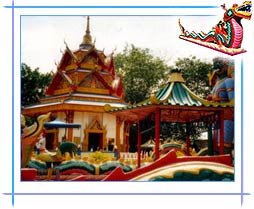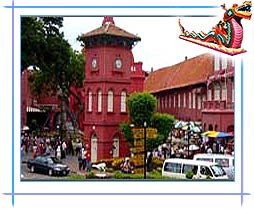 Malaysia has a wide range of tourist attractions. The sheer diversity of tourism destinations is astounding. These include the high-tech city of Kuala Lumpur, tropical island of Langkawi, colonial hill stations of Genting and Cameron Highlands, numerous pristine beaches, National Parks, and the world's oldest tropical rainforests. Malaysia has the potential of catering to tourist of every hue and it truly lives up to its tag line of Malaysia Truly Asia.
Malaysia has a wide range of tourist attractions. The sheer diversity of tourism destinations is astounding. These include the high-tech city of Kuala Lumpur, tropical island of Langkawi, colonial hill stations of Genting and Cameron Highlands, numerous pristine beaches, National Parks, and the world's oldest tropical rainforests. Malaysia has the potential of catering to tourist of every hue and it truly lives up to its tag line of Malaysia Truly Asia.Kuala Lumpur
To describe Kuala Lumpur is like opening a book that has various exciting chapters. Yes, this only global city of Malaysia appears blessed with colors of modernism along with rich heritage. Though formally KL spans over an area of 244 sq kms, its plush precincts virtually get bigger to embrace the entire world. Kuala Lumpur is situated at the confluence of Sungai Gombak and Sungai Klang, and probably, that's how it got its name, which literally means 'muddy confluence' in Malay language.
Kelantan
Kelantan-literally meaning "Land of Lightning"-is an agrarian state with lush paddy fields, rustic fishing villages and casuarina-lined beaches. Located in the northeast corner of the peninsula, the charms of Kelantan are found in the vitality of its culture and its remote, unsullied beauty. Kelantan offers plenty of opportunities for tourists such as river cruises, river rafting, bird watching and jungle trekking.
Malacca
Malacca is a quiet seaside city located on the West Coast of Peninsular Malaysia facing the Straits of Malacca, about 147 km from Kuala Lumpur. Malacca is a wonderful repository of its cultural heritage. Its colonial past is evident in its Portuguese architecture, where as on the streets, Chinese influence is most visible. Most of the businessmen here are Chinese. Over the centuries, the Chinese and local Malay cultures in Malacca intertwined, eventually producing a completely unique society-a mosaic of different cultures.
Negeri Sembilian
 Negeri Sembilian literally means "Nine States". It is so called because it comprises a federation of nine states. Located on the southwest corner of Peninsular Malaysia, Negeri Sembilan encompasses an area of 6,645 sq km and a 48 km long coastline.
Negeri Sembilian literally means "Nine States". It is so called because it comprises a federation of nine states. Located on the southwest corner of Peninsular Malaysia, Negeri Sembilan encompasses an area of 6,645 sq km and a 48 km long coastline.Penang
Penang, literally meaning Island of Betel Nut, is famous for its natural scenic beauty. Also known as the 'Pearl of Orient', Penang entices visitors with its warm seas, golden beaches, lush greenery and delicious cuisine.
Perlis
Perlis is the smallest state in Malaysia. The state is famous for its serene unspoilt beauty, rustic rural scenes and verdant paddy fields. The expanse of verdant paddy fields makes the landscape appear like a huge canvas of brilliant green or gold, depending on the season.
Sabah
Sabah is a tropical paradise located at the northeast corner of Borneo. In ancient times it was known as the "Land Below the Wind" because it lies below the typhoon belt. Sabah attracts visitors with its scenic beauty, rugged landscape and cultural diversity.
Sarawak
Sarawak-the largest state of Malaysia-is better known as the land of fabled White Rajahs, the hornbill and the orangutan. Located on the northwestern shore of the island of Borneo, Sarawak is a preferred tourist destination for those seeking culture, nature and adventure tourism. The rainforests of Sarawak are home to the richest and most diverse ecosystem of the world.
Terengganu
Terengganu is one of the three east coast states on Peninsular Malaysia. Terengganu is the repository of Malaysia's cultural heritage and is home to the lilting Gamelan and the mesmerizing "Ulek Mayang" dance. It is a serene state, with numerous small villages, quiet roads, and secluded islands and beaches.








